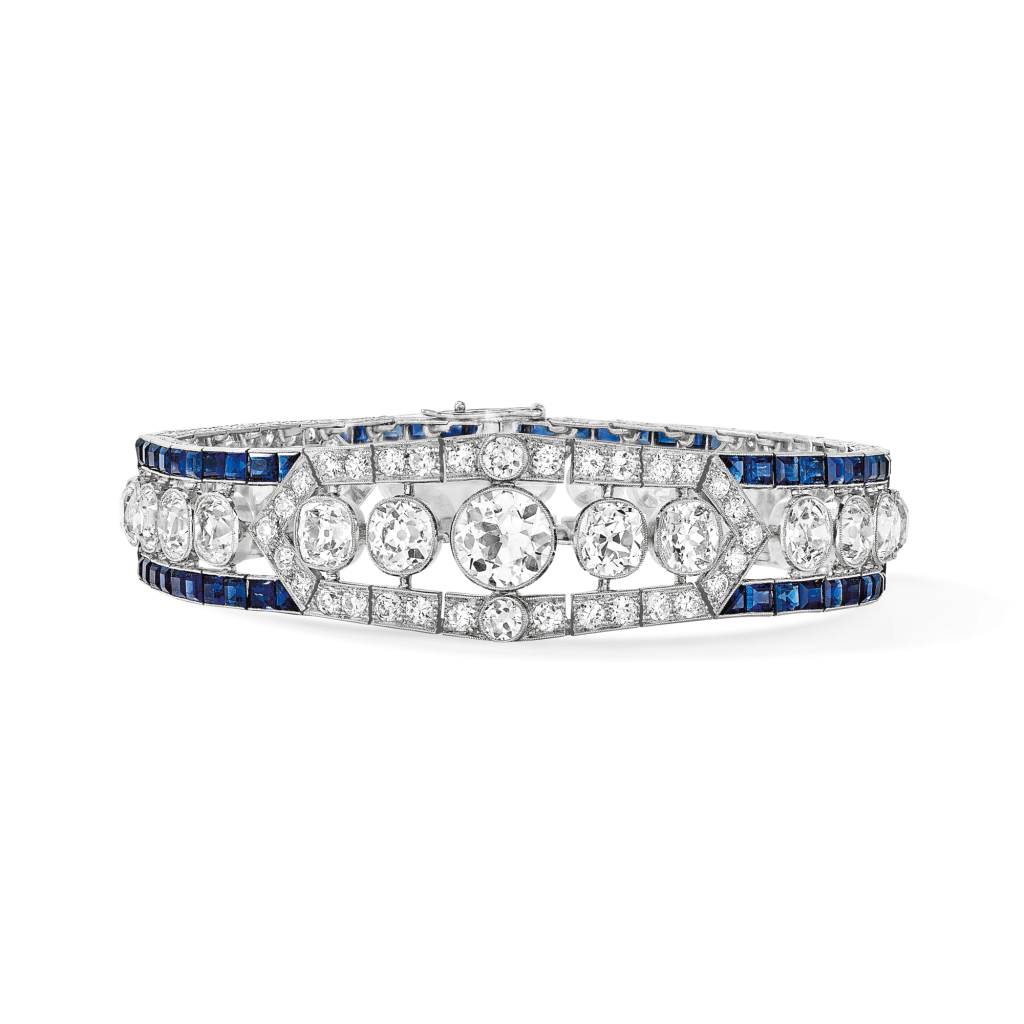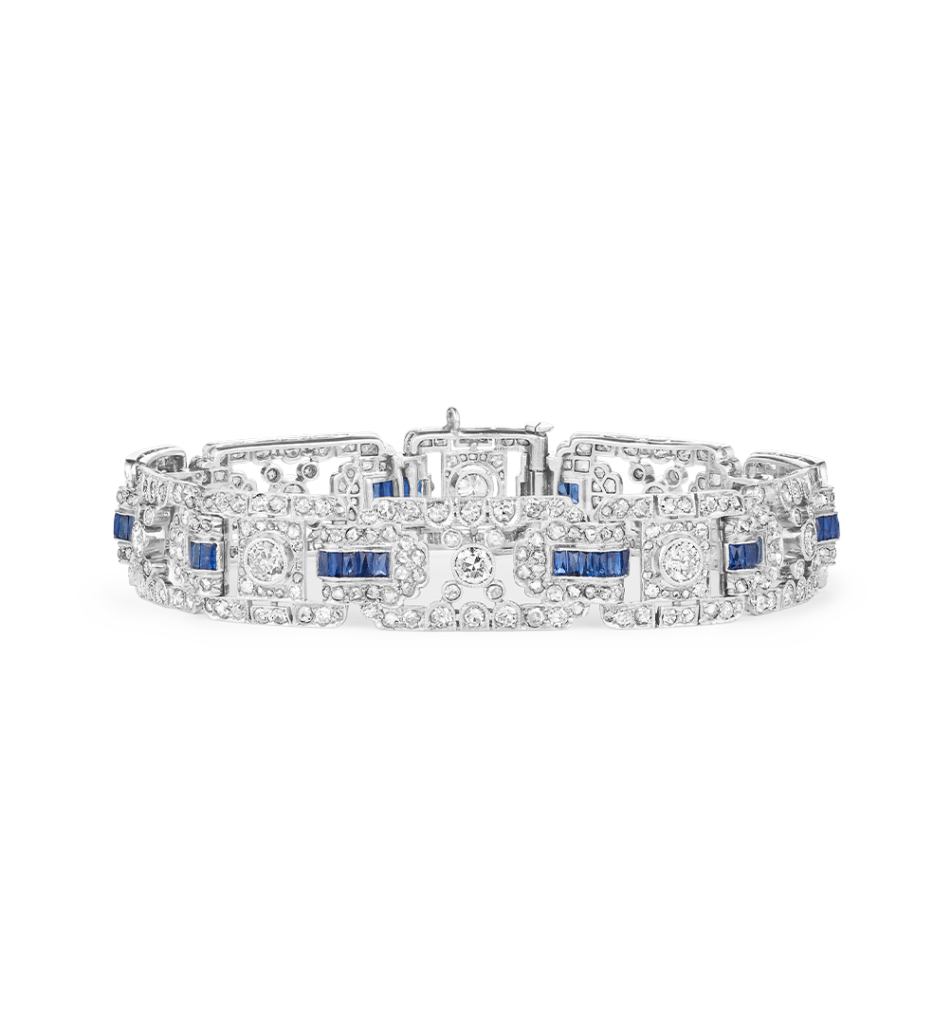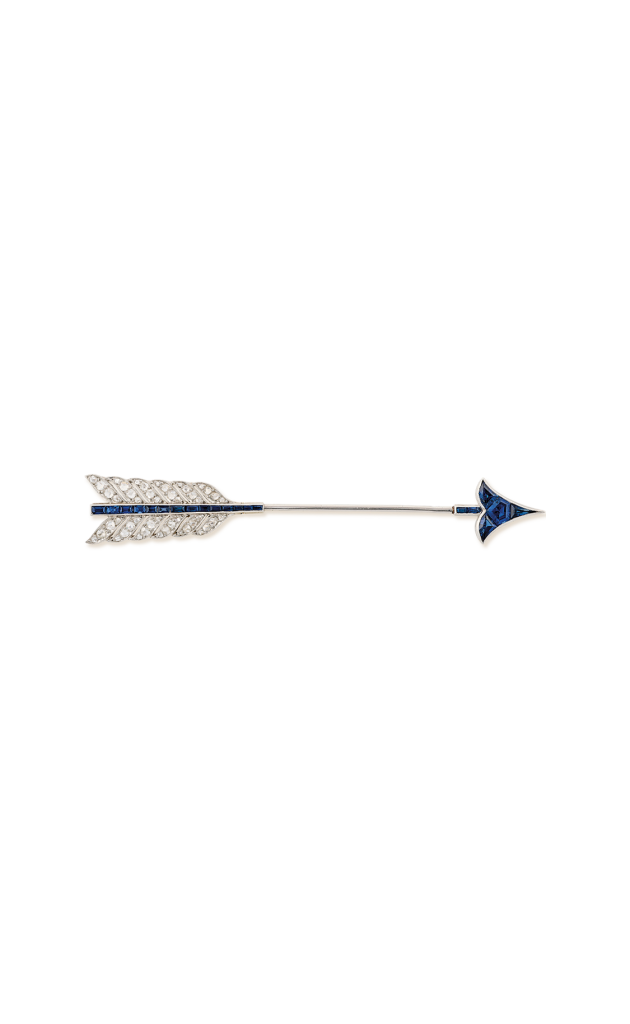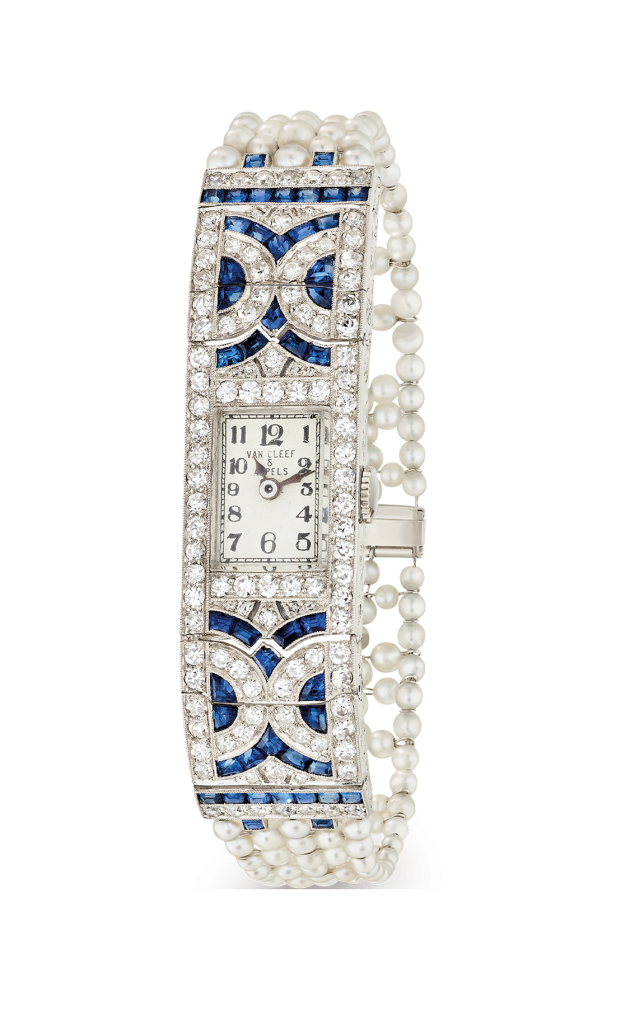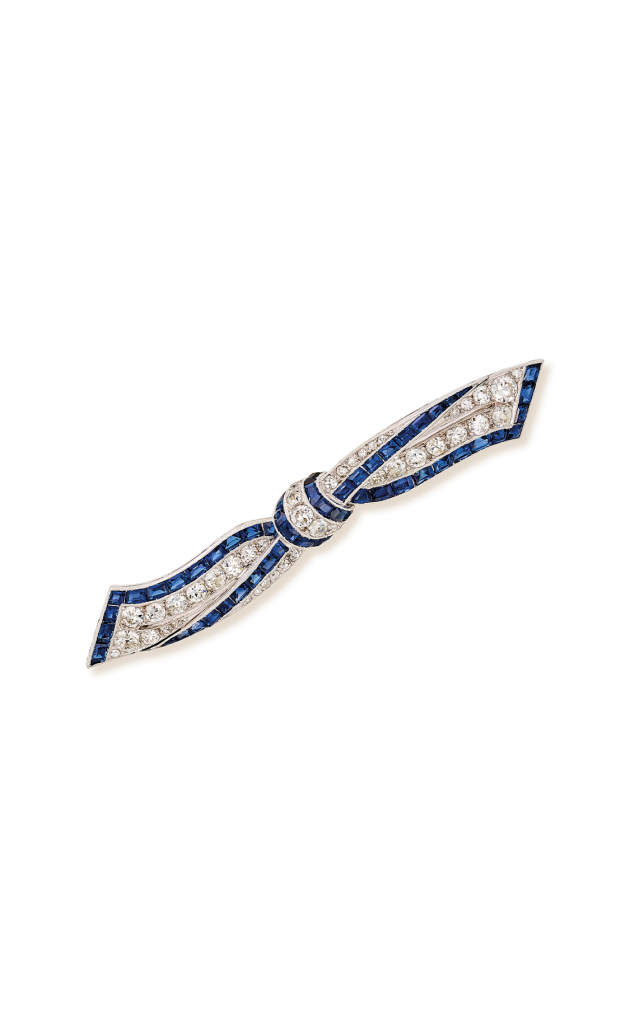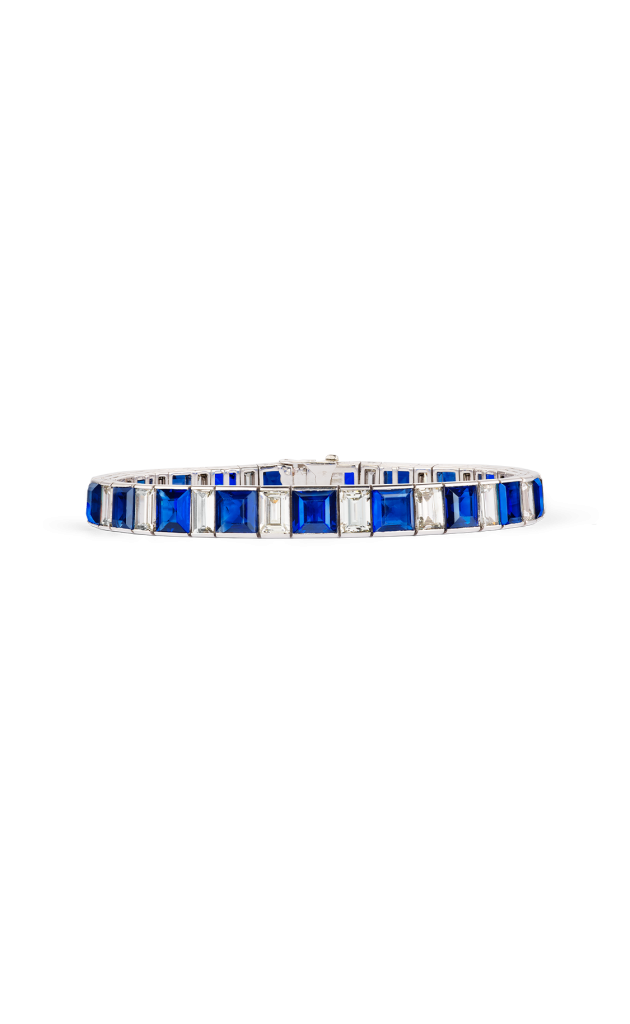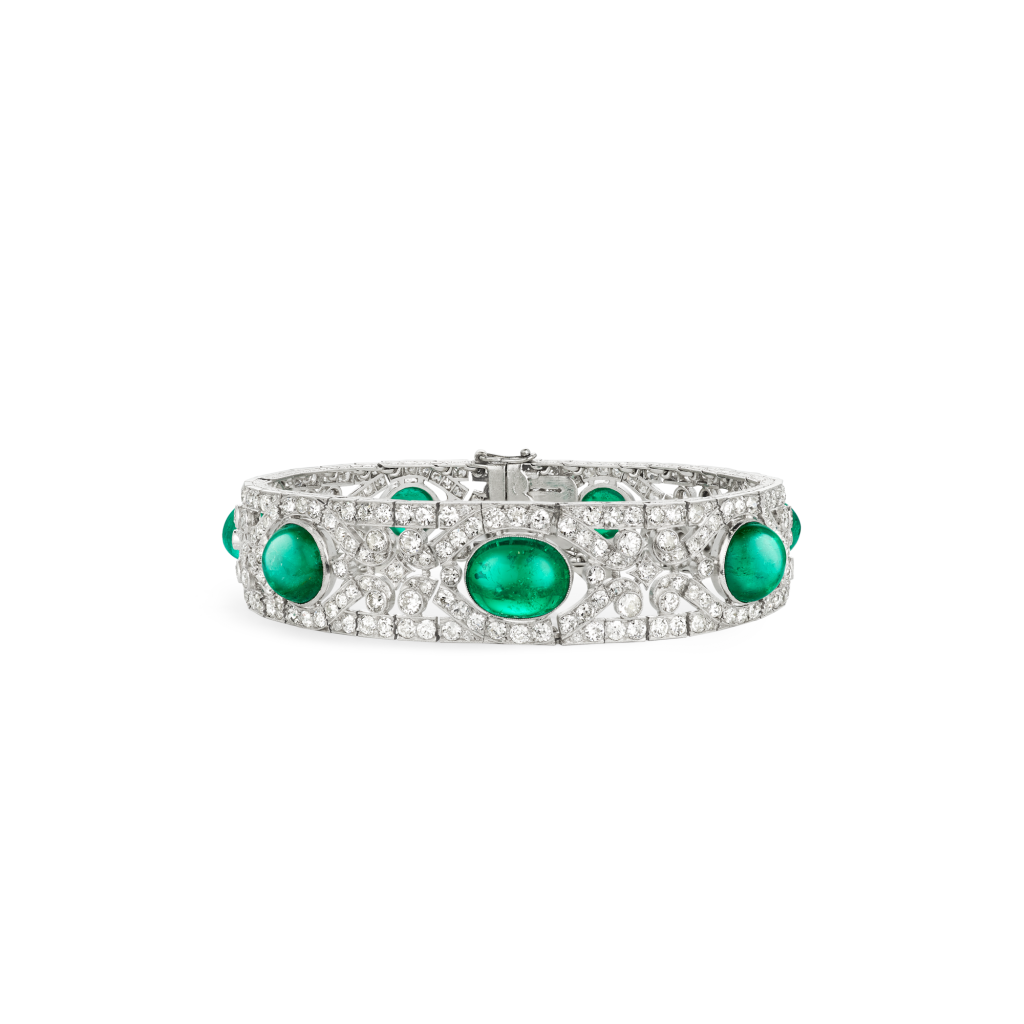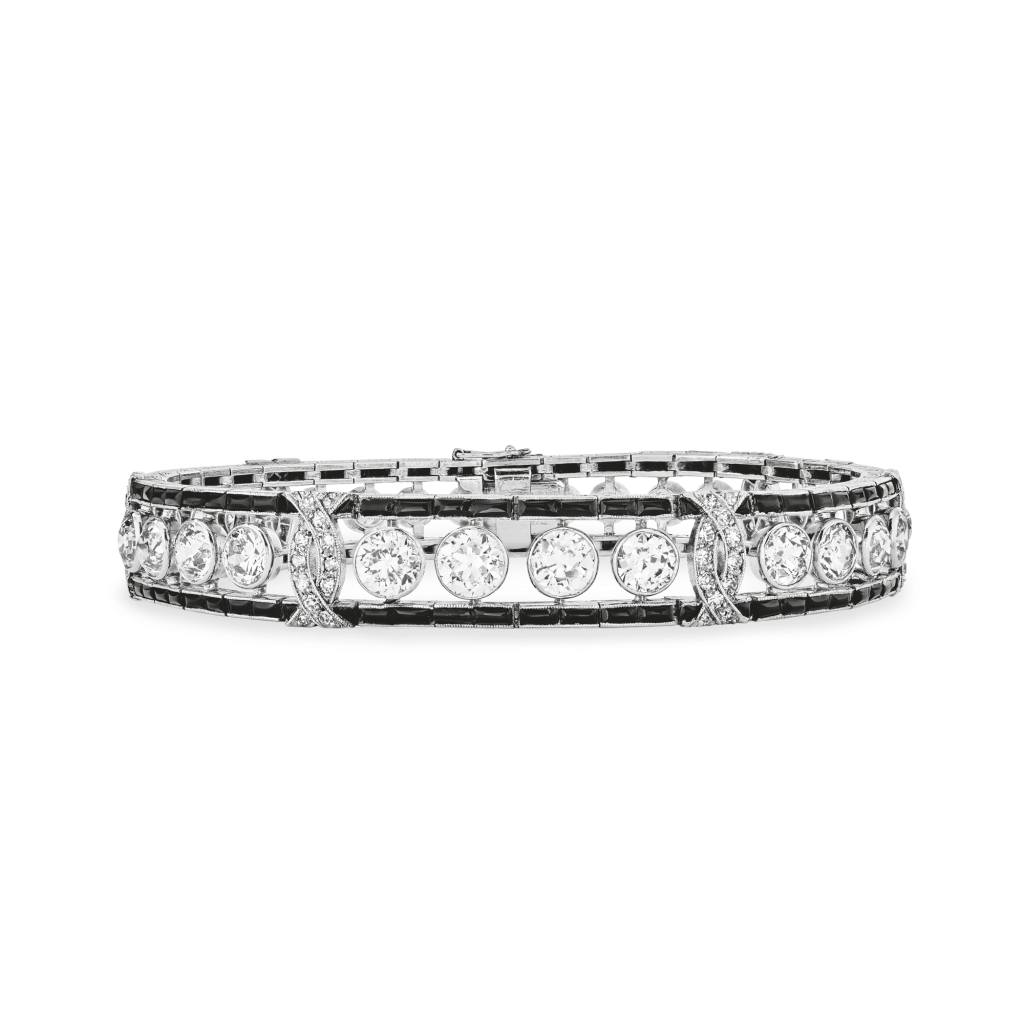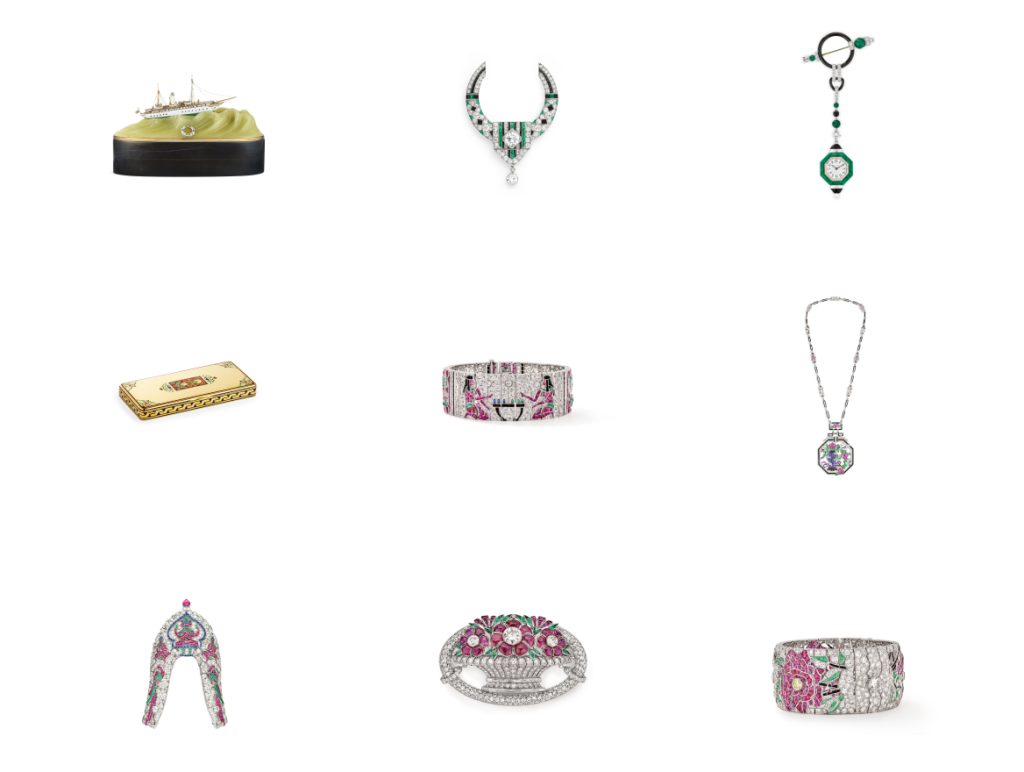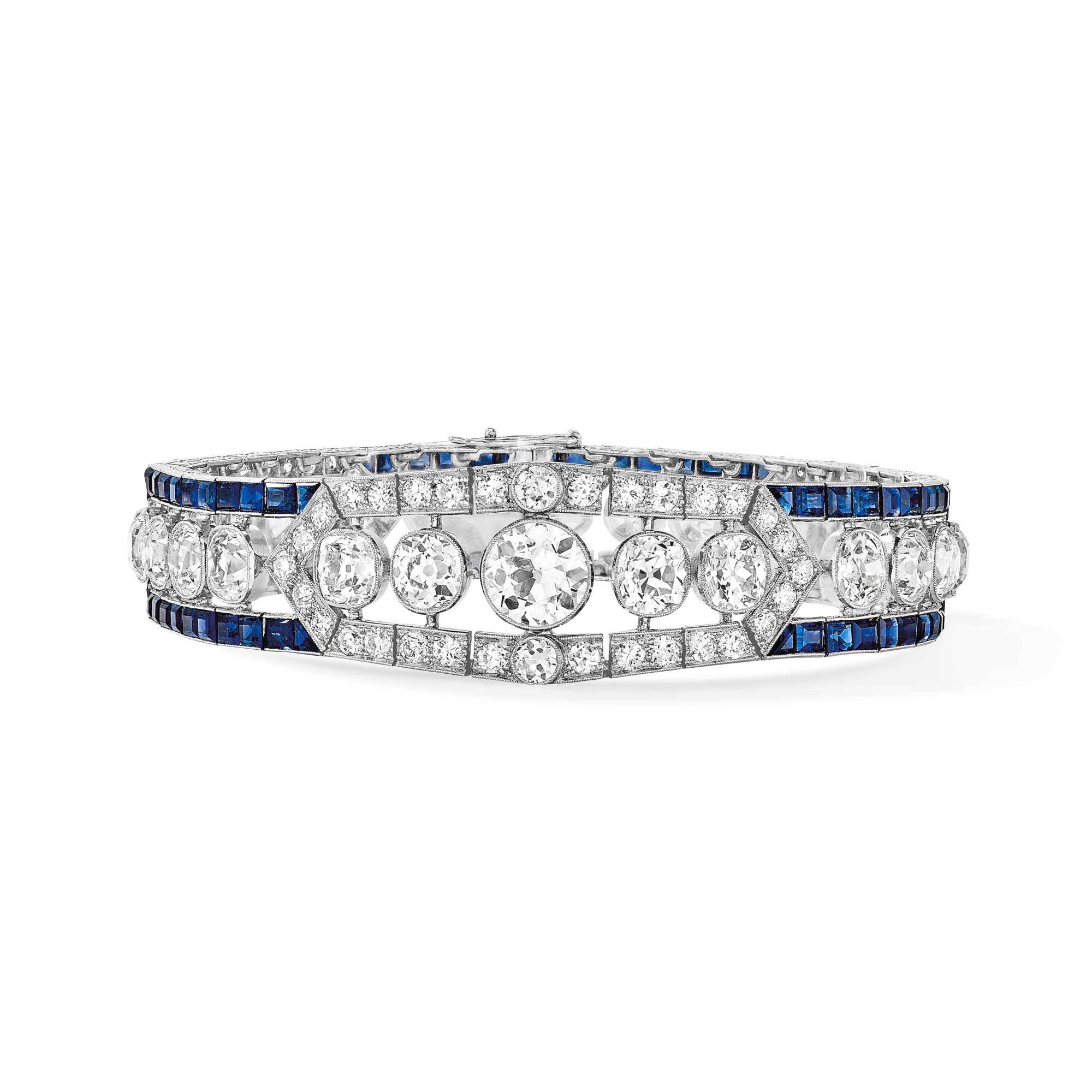
Bracelet


Creation details
- Creation year 1921
- Usage Bracelet
- Dimensions 203 × 19 mm
This bracelet, created in 1921, is a fine example of the experimentation undertaken by jewelers in the early 1920s, and introduces the Art Deco style that triumphed in Paris in 1925. It is composed of an openwork platinum band displaying a succession of closed-set diamonds.
A larger brilliant-cut diamond in the middle of a geometric, diamond-studded cartouche marks the center of the bracelet. This cartouche motif is repeated three times in alternation with sections bordered by two rows of calibrated sapphires, thus creating a two-tone play of contrasts. The gems are edged with beaded platinum thread that adds relief and enhances their brilliance by capturing the light. This beaded thread technique, applied to long surfaces, consists of a granulated effect attained by stamping with the use of a small instrument called a roulette. This bracelet is also particularly flexible thanks to its articulated link structure. The exterior edges of these links are themselves set with diamonds, demonstrating the Maison’s attention to detail and finishing.
Formal simplification
In the early 1920s, jewelers sought to simplify form, in keeping with the taste of “fashionable women in the Rue de la Paix” who “prefer jewelry […] that has less complicated lines.”1Anonymous, “Van Cleef & Arpels,” La Renaissance de l’art français et des industries de luxe (January 1923): 365. favoring straight lines rather than the curves of Art Nouveau jewelry.
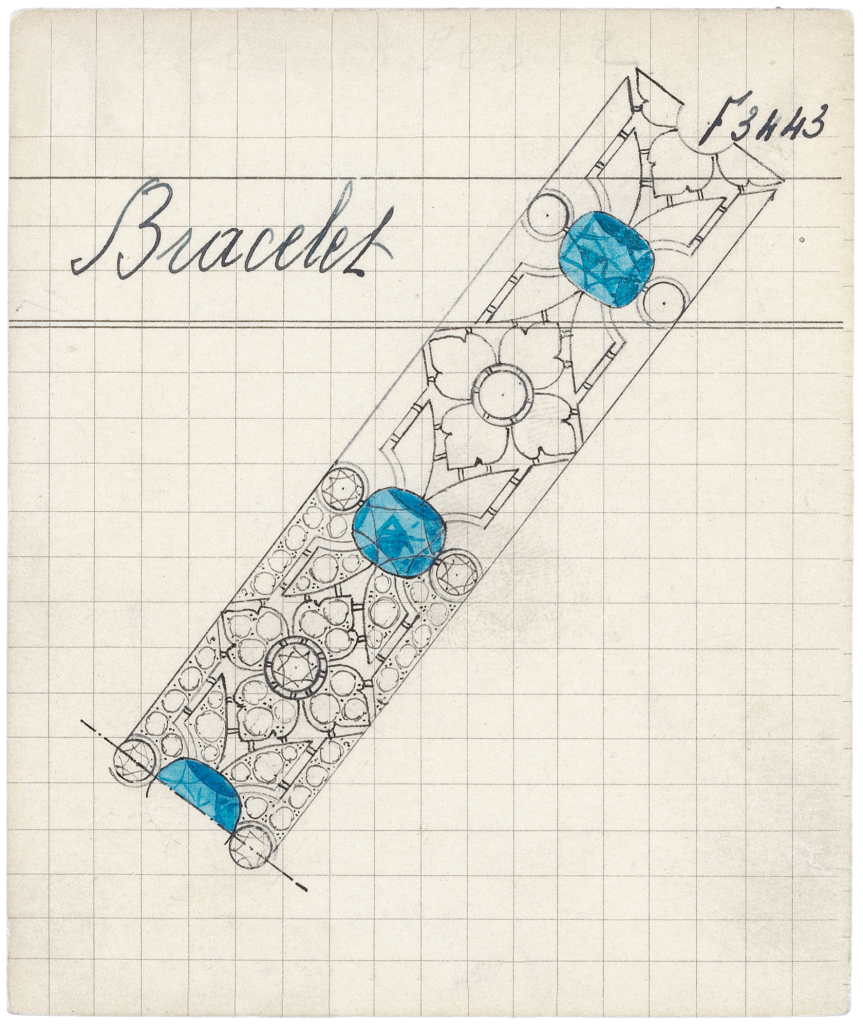
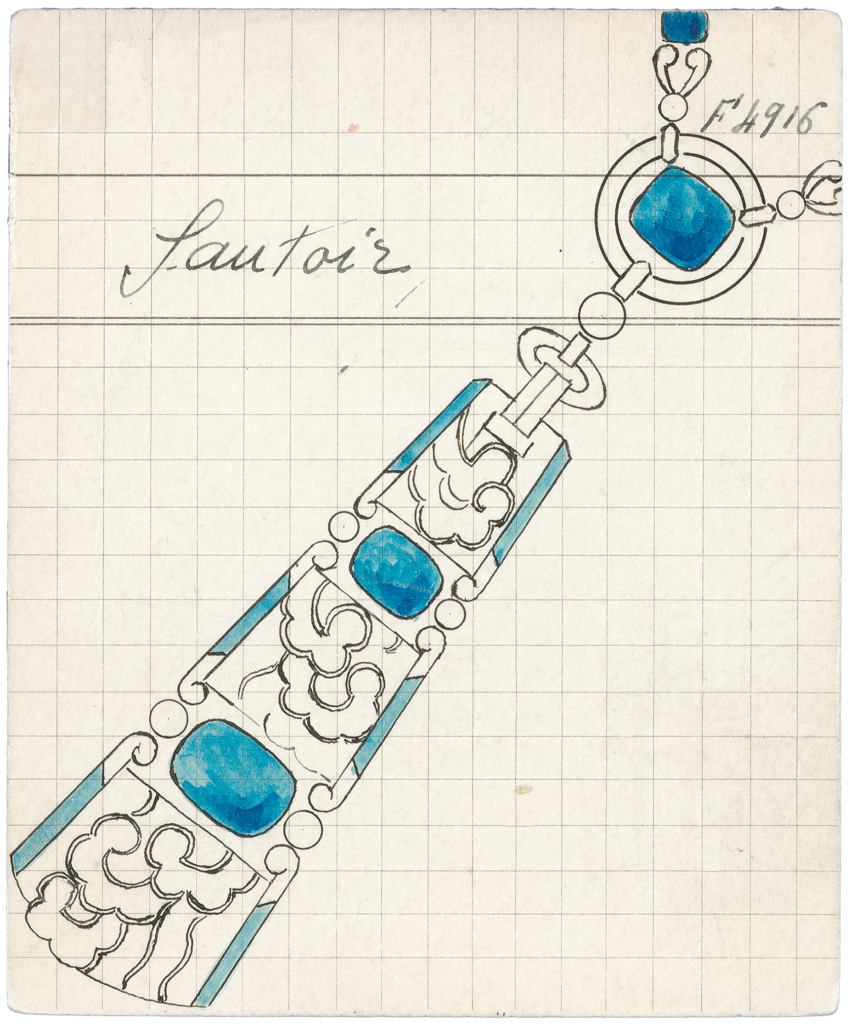
A transitional jewelry through the 1925 Exposition
The aesthetic of this 1921 bracelet, with its stylized motifs and plays of chromatic contrasts, prefigures the “1925 style”. A milestone between the Maison’s early Art Deco works and the pieces that would be presented at the 1925 Exposition internationale, this bracelet attests to the emergence of a new artistic language.
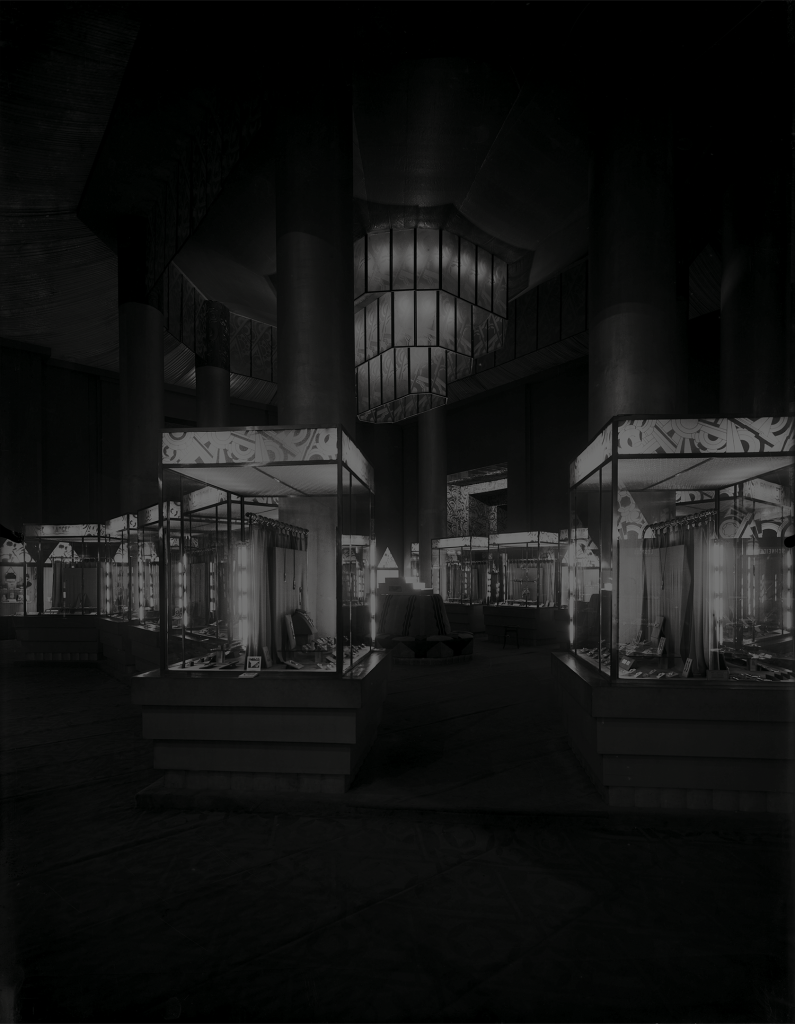
To go deeper
